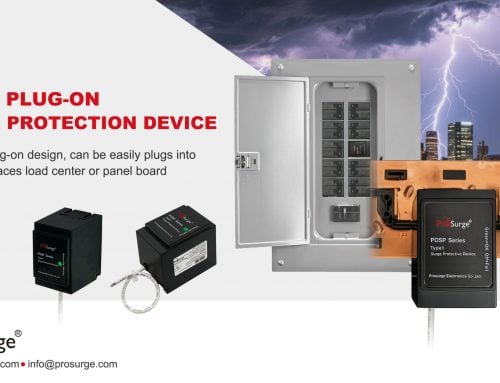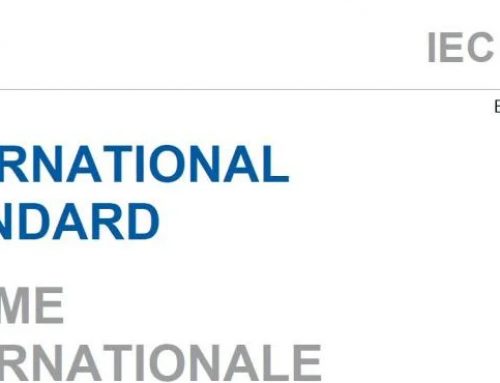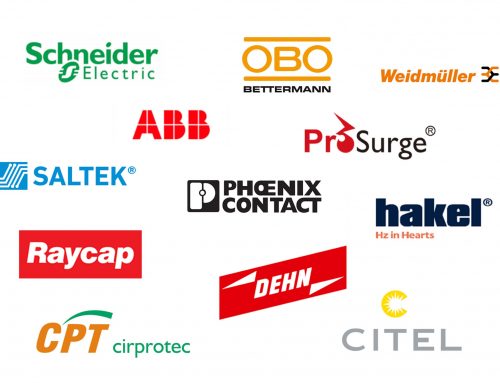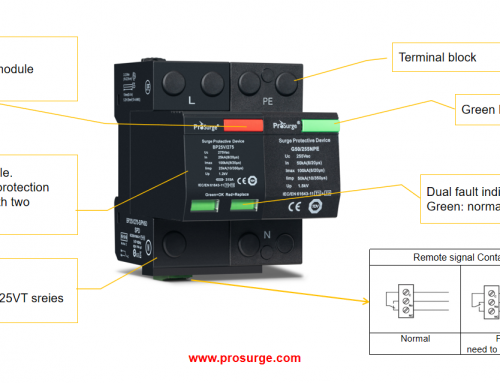Ensuring robust electrical surge protection is critical for safeguarding sensitive equipment, preventing costly downtime, and enhancing power quality. The UL 1449 standard is the definitive benchmark for surge protective devices (SPDs) in North America, categorizing them into distinct types based on installation location and capabilities. Understanding the differences between Type 1 SPDs, Type 2 SPDs, Type 3 SPDs, and component assemblies is essential for effective electrical system protection and lightning protection. This guide demystifies UL 1449 SPD classifications.
The Core SPD Types: Installation & Protection
-
Type 1 SPDs (Permanently Connected, Hard-Wired):
-
Installation Location: Installed between the service transformer secondary and the line side of the main service disconnect overcurrent device (OCPD), or on the load side of the main service OCPD. Includes watt-hour meter socket SPDs.
-
Key Feature: Must be listed without requiring an external overcurrent protective device. This eliminates the risk of incorrect OCPD matching.
-
Nominal Discharge Current (In): Rated for high exposure, either 10kA or 20kA.
-
Ideal For: Primary service entrance protection, especially for whole house surge protection and critical infrastructure where surges originate externally.
-
-
Type 2 SPDs (Permanently Connected, Hard-Wired):
-
Installation Location: Installed on the load side of the main service equipment OCPD (e.g., main panel, sub-panels).
-
Key Feature: May or may not require an external OCPD, as specified by their NRTL listing and labeling. The chosen OCPD can impact the SPD’s effective Nominal Discharge Current Rating (e.g., 10kA with a 30A breaker vs. 20kA with a specific OCPD).
-
Nominal Discharge Current (In): Offers more options: 3kA, 5kA, 10kA, or 20kA.
-
Ideal For: Panel mount SPDs providing secondary protection within the building distribution, industrial surge protection, and commercial electrical systems.
-
-
Type 3 SPDs (Point of Utilization):
-
Installation Location: Installed at a minimum conductor length of 10 meters (30 feet) from the service panel, unless specifically evaluated as Type 2 (with a minimum 3kA In rating). Includes surge protection power strips, plug-in surge protectors, and receptacle-type SPDs.
-
Ideal For: Protecting individual sensitive devices like computers, home entertainment systems, medical equipment, and office equipment directly at the point of use.
-
Key Differences: Type 1 vs. Type 2 SPDs
-
External Overcurrent Protection (OCPD): Type 1 SPDs never require an external OCPD; protection is built-in. Type 2 SPDs may require an external OCPD, specified in their listing.
-
Nominal Discharge Current (In) Ratings: Type 1: 10kA or 20kA. Type 2: 3kA, 5kA, 10kA, or 20kA.
-
UL 1283 EMI/RFI Filtering: SPDs with integrated EMI/RFI filtering evaluated to UL 1283 are only listed for load-side (Type 2/3) applications. Type 1 SPDs cannot have a complimentary UL 1283 filter listing, though they may use UL 1283 recognized components internally.
-
Capacitor Safety Standards: Capacitors in Type 1 SPDs are evaluated to UL 810. Capacitors in Type 2 SPDs are evaluated to UL 1414 and/or UL 1283.

Component Assemblies: Building Blocks for OEMs & Panels
-
Type 1, 2, 3 Component Assembly SPDs (Recognized Components): These are SPD sub-assemblies factory-installed into listed electrical distribution equipment (like panels or switchgear) or end-use equipment. They pass the same safety tests as listed SPDs but require installation within a host assembly for user safety (e.g., exposed terminals need enclosing). *Distinct from older Type 4/5 concepts.*
-
Type 4 Component Assembly SPD (Recognized Component): Consists of one or more Type 5 components plus an integral/external disconnector or means to pass UL 1449 limited current tests. These are incomplete SPD assemblies requiring further evaluation within a listed end-use product. Cannot be field-installed standalone.
-
Type 5 SPD (Recognized Component): The fundamental building blocks – discrete surge protection components like MOVs (Metal Oxide Varistors) or gas discharge tubes. Mounted on PCBs or with leads/enclosures. These are incomplete and require design into a complete SPD assembly (like Type 1, 2, 3, or 4). Cannot be field-installed standalone. Essential for circuit protection design.
Choosing the Right SPD for Optimal Power Quality and Equipment Safety
Selecting the appropriate UL 1449 listed SPD type is paramount for effective transient voltage surge suppression (TVSS):
-
Type 1 SPDs: Essential first line of defense at the service entrance for maximum lightning surge protection and utility surge mitigation.
-
Type 2 SPDs: Crucial for secondary surge protection at distribution panels, protecting downstream circuits in commercial buildings and industrial facilities.
-
Type 3 SPDs: Provide localized point-of-use surge protection for sensitive electronics.
-
Layered Approach (Type 1 + Type 2 + Type 3): Implementing SPDs at multiple levels offers the most comprehensive equipment protection strategy, managing different surge energies effectively.

Ensure Your Surge Protection Meets UL 1449 Standards
Understanding UL 1449 SPD types is fundamental for designing resilient electrical systems, protecting valuable assets, and ensuring power reliability. Whether you need whole building protection, panel level SPDs, or equipment specific surge suppression, selecting the correct SPD type certified to UL 1449 is non-negotiable. Consult with certified professionals to design a surge protection strategy tailored to your specific needs and electrical code requirements. Protect your investment with the right surge defense.




